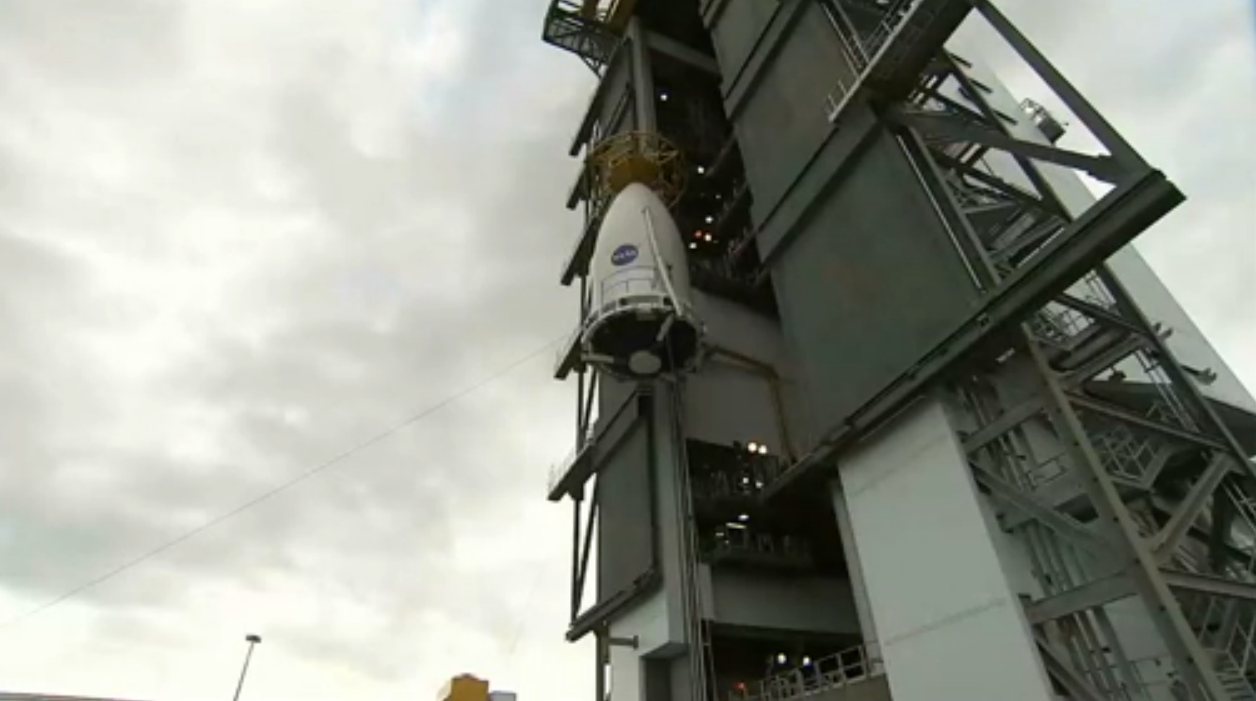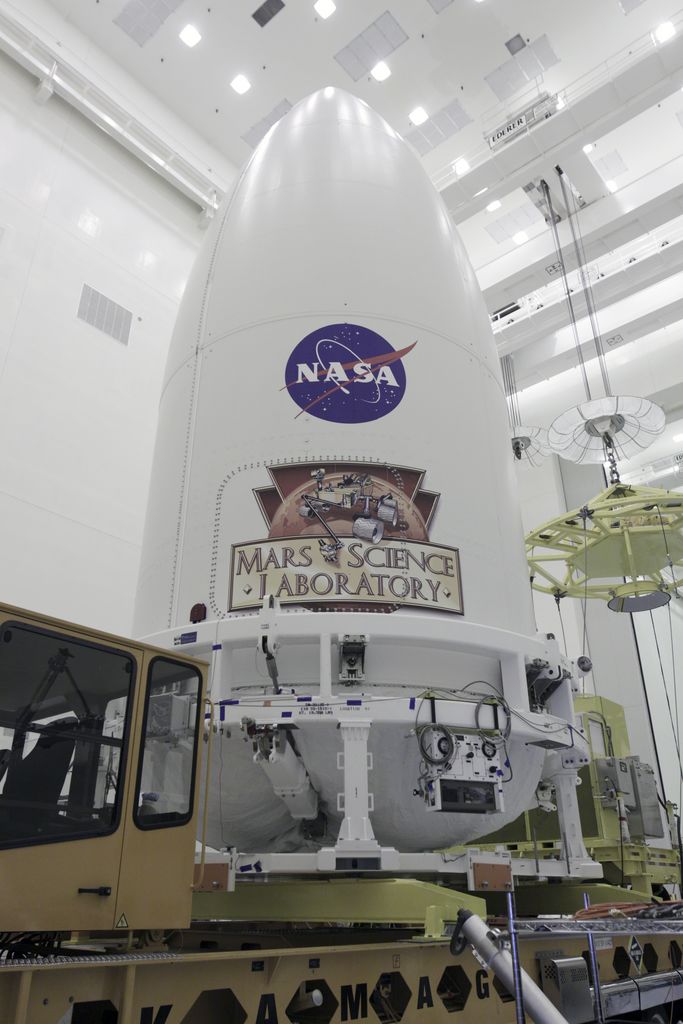NASA's Next Mars Rover Hoisted Atop Rocket

NASA's next Mars rover has been placed atop the rocket that will launch it toward the Red Planet three weeks from now, officials announced today (Nov. 3).
Technicians hoisted the car-size Curiosity rover — the centerpiece of NASA's $2.5 billion Mars Science Laboratory mission — atop its Atlas 5 rocket early Thursday morning at Florida's Cape Canaveral Air Force Station. Rocket and rover are slated to blast off Nov. 25.
Curiosity had been at a servicing facility at NASA's nearby Kennedy Space Center. In Thursday's predawn hours, a heavy-duty transporter vehicle rolled the rover, encapsulated in its payload fairing, to Cape Canaveral's Space Launch Complex 41, where the Atlas 5 awaited.
Curiosity should arrive at Mars in August 2012. It will touch down at a huge crater called Gale after an unprecedented landing that employs parachutes and a rocket-powered "sky crane" that will lower the heavy rover down to the surface on cables.
The rover will then explore Gale and the strange 3-mile-high (5-kilometer) mountain that rises from its center, looking for any clues that the Red Planet is, or ever was, capable of supporting microbial life.
The rover has 10 science instruments to help it assess Mars' past and present habitability, including gear that could detect organic compounds, the building blocks of life as we know it.
Curiosity's mission is slated to last about two Earth years, but it wouldn't be a shock if the robot outlasted its warranty. NASA's Opportunity rover, after all, is still chugging around Mars, nearly eight years after it landed on the Red Planet.
Breaking space news, the latest updates on rocket launches, skywatching events and more!
You can follow SPACE.com senior writer Mike Wall on Twitter: @michaeldwall. Follow SPACE.com for the latest in space science and exploration news on Twitter @Spacedotcomand on Facebook.

Michael Wall is a Senior Space Writer with Space.com and joined the team in 2010. He primarily covers exoplanets, spaceflight and military space, but has been known to dabble in the space art beat. His book about the search for alien life, "Out There," was published on Nov. 13, 2018. Before becoming a science writer, Michael worked as a herpetologist and wildlife biologist. He has a Ph.D. in evolutionary biology from the University of Sydney, Australia, a bachelor's degree from the University of Arizona, and a graduate certificate in science writing from the University of California, Santa Cruz. To find out what his latest project is, you can follow Michael on Twitter.

